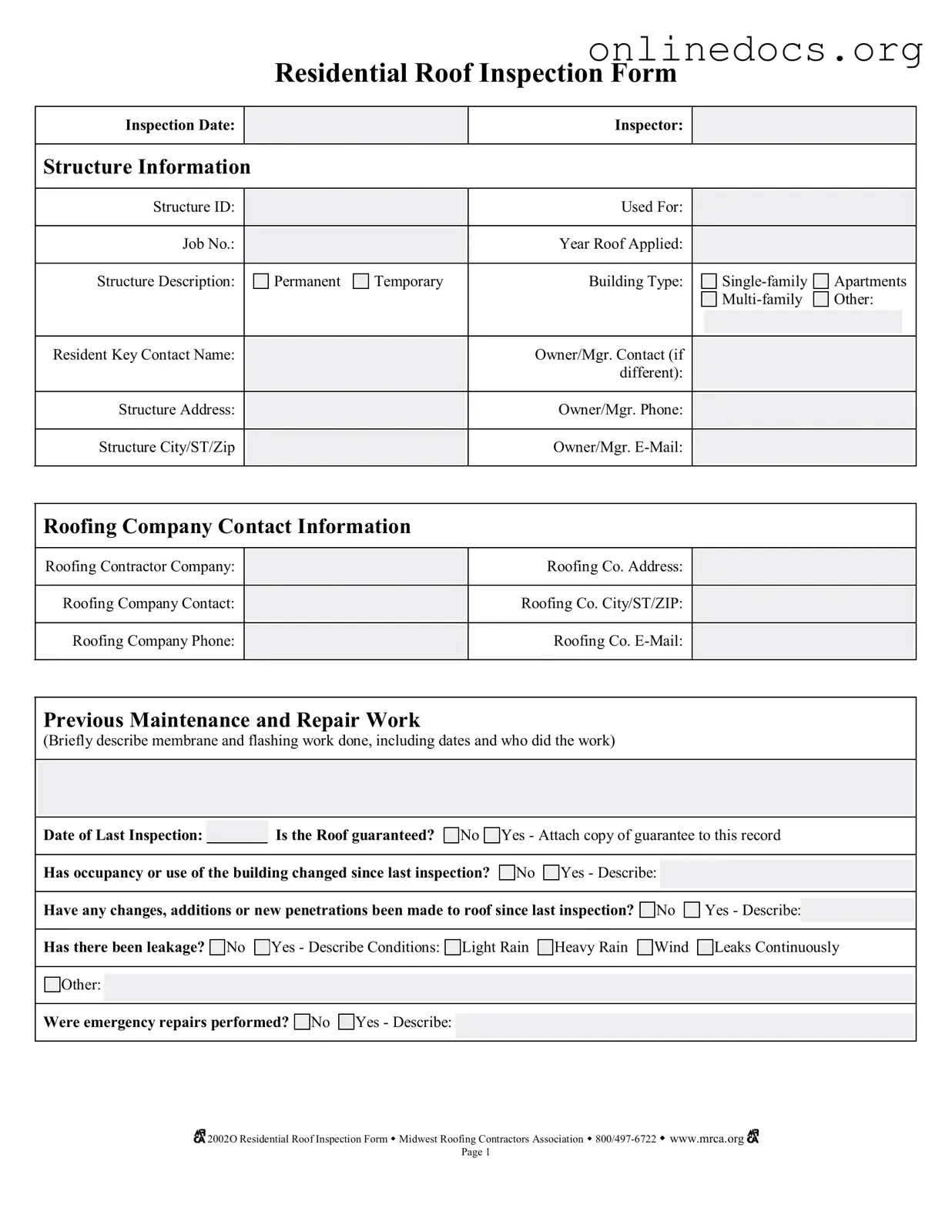The Roof Inspection form shares similarities with a Home Inspection Report. Both documents serve to assess the condition of a property, focusing on structural integrity and safety. A Home Inspection Report typically includes details about various systems within the home, such as plumbing, electrical, and HVAC, along with the roof. Like the Roof Inspection form, it requires information about previous maintenance and repairs, ensuring a comprehensive overview of the property's condition. The urgency in addressing issues found during either inspection can significantly impact property value and safety.
Another comparable document is the Property Condition Assessment (PCA). A PCA is often used in commercial real estate transactions to evaluate the physical condition of a property. Similar to the Roof Inspection form, it provides a detailed analysis of various components, including the roof, to identify any necessary repairs or replacements. Both documents emphasize the importance of documenting past maintenance and repairs, which can influence future investment decisions and liability considerations.
In the context of property transactions, understanding the importance of proper documentation cannot be overstated. Just as a Roof Inspection Report serves to evaluate and detail the condition of a roof, other essential forms like the Trailer Bill of Sale are crucial in transferring ownership of specific assets. To ensure that all legal requirements are met during the sale of a trailer, it is advisable to utilize the necessary documentation, such as the https://californiapdfforms.com/trailer-bill-of-sale-form/, to facilitate a smooth transfer process.
The Roof Maintenance Log is also akin to the Roof Inspection form. This log tracks ongoing maintenance activities and repairs made to the roof over time. Like the Roof Inspection form, it requires detailed descriptions of work performed, dates, and the individuals or companies responsible for the work. Maintaining a comprehensive log can help property owners anticipate future repairs and budget accordingly, aligning with the proactive approach encouraged by the Roof Inspection form.
A Warranty Document for roofing systems is another relevant document. This warranty outlines the terms and conditions under which the roofing system is guaranteed against defects. Similar to the Roof Inspection form, it requires documentation of previous inspections and repairs to validate claims. Understanding the warranty's specifics can help property owners make informed decisions about maintenance and repairs, ensuring compliance with warranty requirements.
The Insurance Claim Form for roof damage is yet another similar document. This form is used to report damage to the roof for insurance purposes. Like the Roof Inspection form, it necessitates detailed descriptions of the damage, including the conditions that led to it. Accurate documentation is crucial for successful claims processing, highlighting the importance of thorough inspections and records in both contexts.
Lastly, the Building Permit Application often parallels the Roof Inspection form. When a roof is replaced or significantly altered, a building permit is typically required. This application includes information about the existing structure, similar to what is found in the Roof Inspection form. Both documents aim to ensure compliance with local building codes and standards, emphasizing the need for proper documentation to avoid legal complications.
